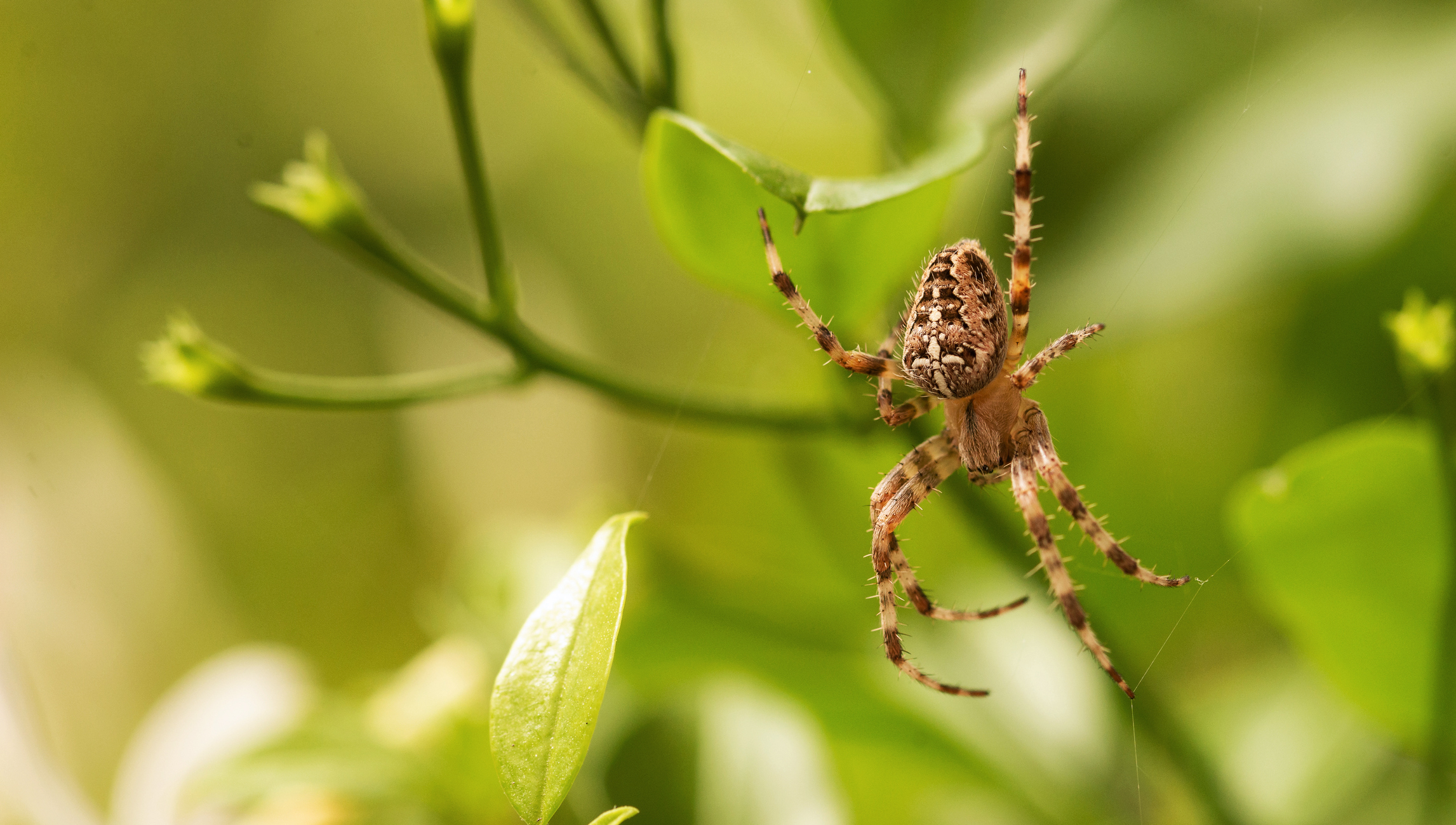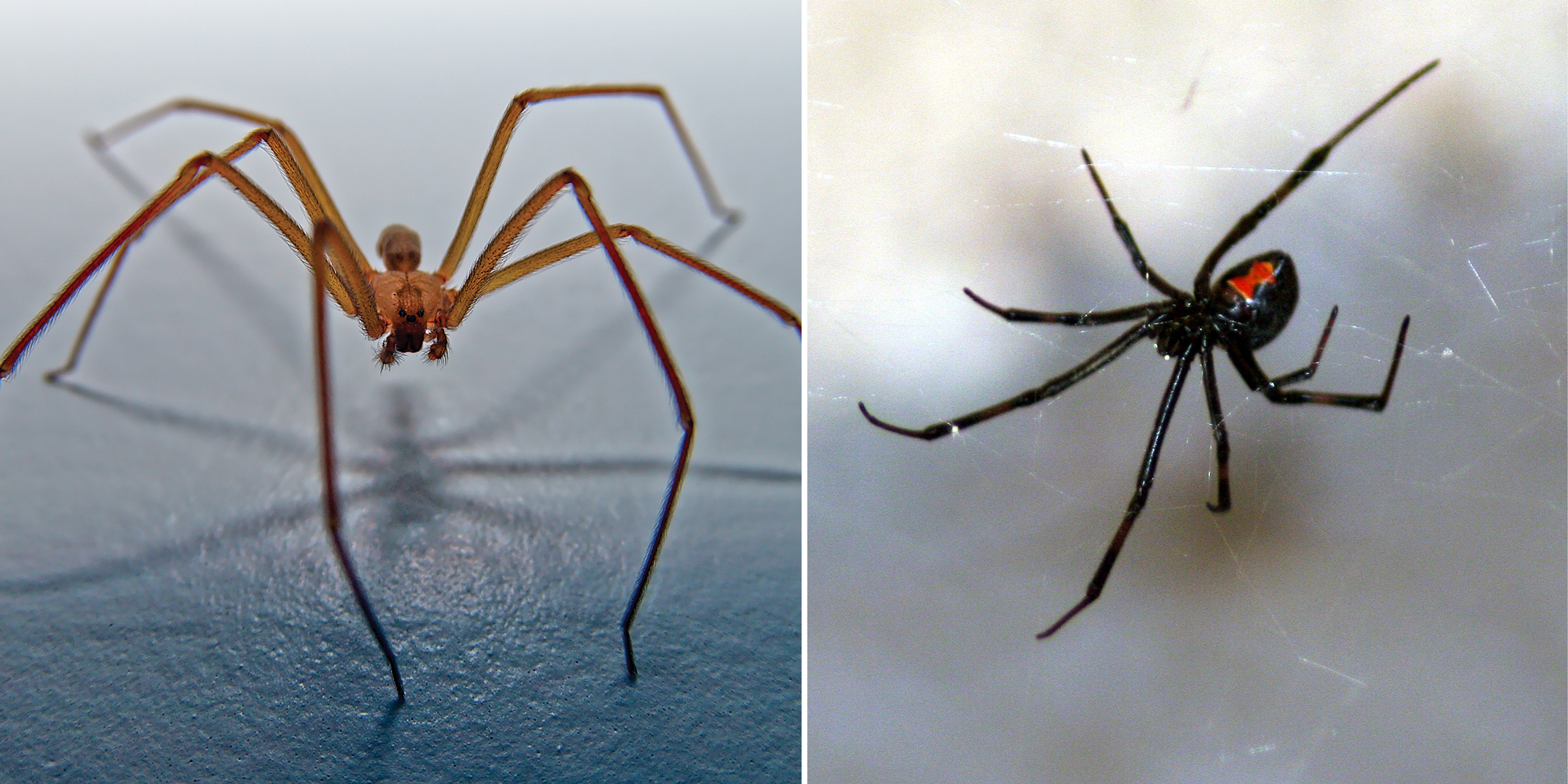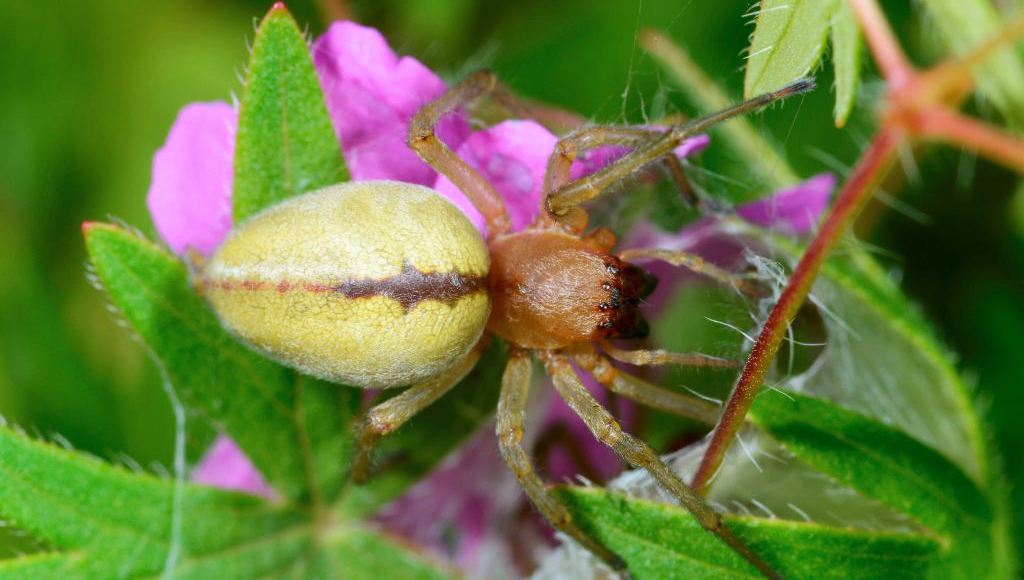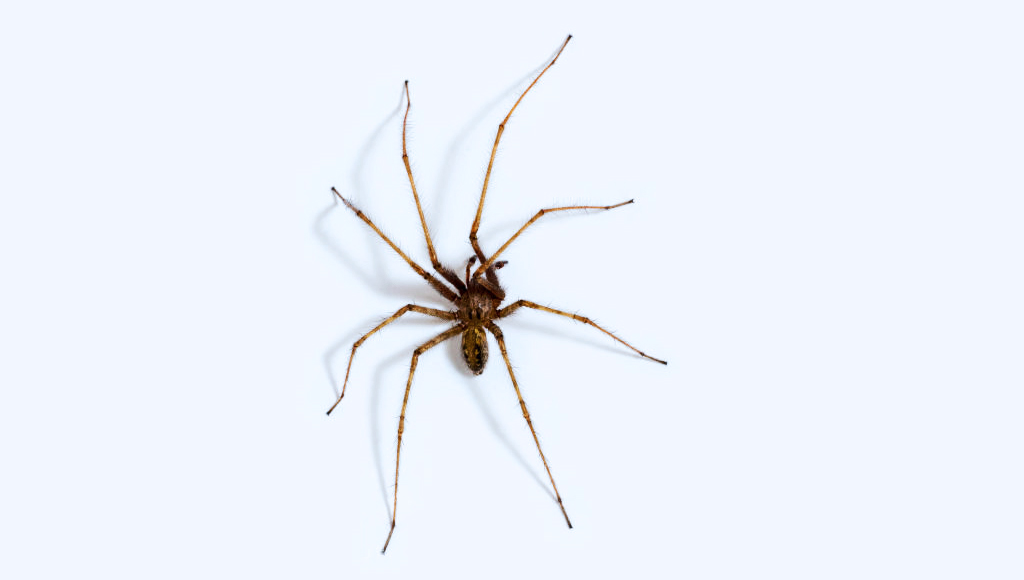
Fall has arrived, the time of year many in the Pacific Northwest start noticing new eight-legged roommates. If you get jumpy around arachnids, this might not be a welcome part of the change in seasons.
But get this. The spiders you’re seeing as the weather gets colder are actually one of two species that reach maturation in late summer and early fall here: the giant house spider (the one scurrying around your bathroom floor) and the cross orb weaver (the one that’s built a new web every time you walk out your door). And neither can harm humans. In fact, of the more than 50,000 known species of spiders, only about 25 — that’s right, 25 — have venom that can hurt us, and none of them live in the Seattle area.

Rod Crawford, the curator of arachnids at the University of Washington’s Burke Museum, has a suggestion for you: “Regardless of what spiders you have around, stop worrying.”
Here are some of the most common misconceptions about spiders.
Myth #1: Spiders frequently bite humans
Spider bites typically look like small bumps or welts. More severe ones can form pus-filled lesions or blisters. However, they are very rare and often confused for other kinds of bug bites or even something more serious like a MRSA staph infection, which can be very dangerous if not treated.
Dr. Paul Pottinger is a physician, director of the Infectious Diseases and Tropical Medicine Clinic at UW Medical Center – Montlake, and the co-host of the Germ and Worm Travel Health Podcast with fellow physician Dr. Christopher Sanford. He rarely sees patients with spider bites.
“Folks are understandably worried if they get a boil or skin lesion after being outside, but these are almost never caused by actual spiders,” he says. “Instead, these are usually mimics caused by a different issue.”
Why are they so uncommon? Because spiders have no reason to be aggressive towards humans.
“They don’t really know we exist,” says Crawford, who has only been bitten three times in over 50 years of handling tens of thousands of spiders. “Practically all spiders are very shortsighted and don’t really perceive a human being as a whole object, let alone something that they might have any reason to bite.”
Myth #2: Spider bites are often deadly
OK, so what if one does bite you, say while you’re reaching for a slipper under the bed? Well, good news there, too.
“Practically every species has venom, but the venom has not evolved to affect vertebrates,” says Crawford. “Vertebrates are not their prey with the exception of a very few larger spiders.”
In the United States, only two kinds of spiders have venom that could harm humans: black widows and brown recluses. Again, neither is aggressive. A famous case study of a house in Kansas infested with (brace yourself) 2,055 brown recluse spiders found that none of the four family members living there ever got bitten — even when one of the spiders crawled up one person's arms while the person put bedding in a washing machine.

(© DeepDesertPhoto, Gabe Ginsberg / Getty Images)
Brown recluse spider bites have seriously injured and killed people. Still, it’s extremely rare — most bites can be treated at home, and even severe bites that cause tissue damage (aka necrosis) will resolve in a few weeks or months with proper medical attention. Plus, the spiders’ range is limited to the central and southern U.S., so if you live in the Pacific Northwest, you can exhale.
If you live east of the Cascades, you could run into a black widow — and Pottinger doesn’t recommend getting too close and personal with them. That’s especially true for little ones playing outside.
“Black widows are so incredibly beautiful that sometimes kids just can’t help themselves and try catching or playing with them — do not do this,” he says.
A black widow’s venom contains neurotoxins that attack the nerve endings in your muscles, causing pain, cramping and spasms throughout your body and sometimes trouble breathing. But as scary as that sounds, most people recover with medical treatment within 24 to 48 hours.
The yellow sac spider is also sometimes listed as a dangerous spider in Washington. While it can sometimes crawl into shoes or sheets and cause a painful bite, its venom rarely leads to long-term harm.

Myth #3: Bigger spiders are more dangerous
While you won’t find black widows or brown recluses in Western Washington, you probably have seen some big boys in your house. Crawford gets the most calls about the giant house spider, which first appeared in Seattle in 1960 and can get up to 4 inches across. They live in the nooks and crannies of your house year-round, but you notice them this time of year because they’re mature and looking for mates.

“It scares people because of its size and because it's very, very fast-moving when it's running across the floor from something that's comparatively the size of Godzilla,” says Crawford. “But they are so docile that I have many times used them as hands-on demonstrators for school children.”
So, while seeing a giant spider on your ceiling or bathroom floor might give you a fright, it is entirely harmless.
Myth #4: You swallow spiders in your sleep
Crawford has heard so many variations of this one that he devoted a page on the Burke Museum’s Spider Myths website to it. In short? There’s absolutely no evidence spiders crawl into our mouths while we’re asleep.
“I don’t know of any evidence that it’s possible to swallow any solid object while you’re asleep,” says Crawford.
Myth #5: Releasing spiders outside is helping them
OK, so you know spiders are harmless, but all the same, you’re having trouble falling asleep with one hanging out on the ceiling above your bed. The humane thing would be to capture it in a jar and release it outside, right? Wrong.
“The spiders you commonly see indoors are species that you’ll never find in the middle of your lawn or in the forest,” says Crawford. “There are places that you can put a house spider where it might survive — your crawl space, your garage, your carport, your garden shed — but not the middle of the lawn. It’s not going to survive there.”
So capturing one of those giant house spiders and releasing it outside is not doing it any favors — and your house is probably home to hundreds more. On the other hand, the orb weavers making those webs everywhere will probably not take up residence inside.
Myth #6: A spider bite is always a medical emergency
While rare, it is still possible to get bitten by a spider. If that happens, Pottinger recommends gently washing the bite with soap and water. Sometimes, a local allergic reaction can develop, causing redness and swelling — in that case, treat with a topical antihistamine or steroid, like hydrocortisone. Nonsteroidal anti-inflammatory drugs like ibuprofen can help, too.
Typically, there’s no need to go to the doctor unless you think it might have been a spider with harmful venom, like a black widow. In that case, Pottinger has this advice:
- Do not panic.
- Try to capture it (safely) so a doctor can help ensure it’s not dangerous — or if it is a venomous variety, this can help them treat the bite.
- Go to your nearest urgent care.
“Do not panic. Did I mention that already?” says Pottinger.
Your spider encounters will be peaceful almost all of the time. And now you know that the next time you see an eight-legged cohabitant, there’s no need to grab a shoe or magazine.

 Healthy ideas for your inbox
Healthy ideas for your inbox





